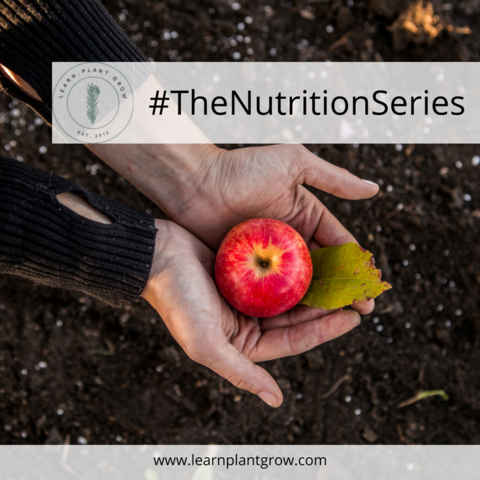This post was co-authored by my awesome husband Tanner Pollack. Tanner’s background is agronomy (the science of growing crops) with a focus on crop production. He runs an agronomy consulting business and farms in Northern Alberta.
Part 5: #TheNutritionSeries
Ok. We lied. Originally we said this was going to be a 4 part series but we needed to do one more blog post.
We absolutely could not forget about the micronutrients – so guess what we’re talking about today? MICRONUTRIENTS (whoop, whoop!).
The nutrients we’re going to talk about today are all labeled ‘micronutrients’ because they’re used in very small amounts by plants (but they’re still essential for plant growth). Potting soil, like the kind we use in the greenhouse is a soilless mix, so we need to add these micronutrients as part of our fertilizing routine. If you’re looking for these nutrients to be listed on fertilizer, don’t fret – any of your general purpose garden fertilizers will have most or all of the micronutrients.
One trick to remember is that micronutrient issues usually show up when the soil is “too” something; too cold, too wet, too dry, too acidic, or too basic. The weather-related “too’s” will fluctuate through the season; if you want to know more about the micronutrient levels in your garden, ask for a micronutrient package when you soil test your garden.

Iron
Iron is needed by the plant for chlorophyll production and photosynthesis. Iron deficient plants tend to have yellowed, chlorotic, or necrotic (dying) leaves. High clay, high pH soils tend to be prone to deficiency. Sandy, acidic soils can be quite high in iron, possibly to the point where it interferes with other nutrients.
Copper
Copper is required by plants for photosynthesis and to help build proteins. It also helps with lignin (cell wall) formation. Copper can also impact the flavour and sugar content of fruits. Copper deficient plants tend to have some leaf chlorosis; some plants also have a blue-green coloration. Copper deficiency can also reduce pollen viability, affecting the production of things seeds and fruits. High pH, high organic matter (think peaty) soils can have low levels of available copper and may need some additional fertilizer.
Zinc
Zinc is important for many different functions on the plant, especially production of auxins (plant growth hormones). Plant hormones help regulate the different stages of the plant – germination, vegetative growth, reproduction, and senescence (maturing). The hormones that zinc helps promote are necessary for germination and maturity. Certain soil conditions can increases chances of deficiency. High soil pH reduces available zinc; sandy soils are also prone to low zinc.. High phosphorous can also induce zinc deficiency. Stress (cold soils, wet soils) can also induce zinc deficiency. Luckily, one of the best sources of zinc is organic matter, so natural soil levels and added compost can help provide zinc for your garden.
Boron
Boron plays a part in a number of different systems in the plant, like the rest of the micronutrients. Boron helps with carbohydrate movement and metabolism in the plant. It is also very important for pollination and seed production, and cell division in general. Plants that rely on flowering to produce a seed or fruit are generally going to need a bit more boron. Sandy, low organic matter soils can have low available boron. High pH can also reduce availability of boron. Caution is urged if you need to apply boron though, as it can easily be raised to toxic levels, especially in gardens.
Manganese
Manganese is involved in a number of plant enzymes, notably several involved in chlorophyll production and photosynthesis. Manganese is more available under low soil pH conditions. High soil pH, high organic matter soils can be prone to deficiency. Periods of stress on the plants (especially waterlogged soil) can induce manganese deficiency as well. Like most micronutrients, fertilizing with a manganese-specific fertilizer can easily create a soil toxicity – your best bet is to use a complete fertilizer solution that supplies manganese and the other micronutrients in low doses.
There are a number of other mineral nutrients that plants need in small quantities – molybdenum, nickel, and cobalt are commonly included in small amounts in complete fertilizers. Your garden soil will normally be able to supply these to your plants.
So, that’s officially a wrap on #TheNutritionSeries. Feel free to email us questions, and if you’re looking for a soil test this spring, you can contact us at info@learnplantgrow.com.
Sources
https://en.wikipedia.org/wiki/Plant_nutrition
Marschner, Horst. Mineral Nutrition of Higher Plants, second edition. Academic Press, 1995.
Comments +